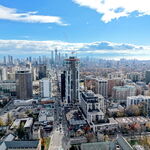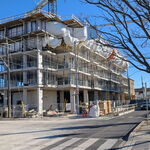WEGO is great in the falls area, the trick is getting people from the GO station to the Falls.
A fully loaded GO train carries around 2000 people crush loaded.
Doing the math thats around 10-15 articulated buses required to get those passengers to Table Rock Point.
Not sure there is an easy solution to this issue.
Bombardier claims that the crush load of a bilevel coach is 360 people, so a crush loaded 12-car train would theoretically be 4320 people. However that estimate is wildly over-optimistic for the Niagara train, since the crowding levels are not actually crush loads, and a lot of space is lost to bicycles.
Here are the seats I counted in
this video I filmed walking through a 12-car weekday Niagara GO train:
Here's an adjusted version with the lower levels of coaches 1-3 deleted to represent the bicycle coaches of the weekend consist. The total number of seats is about 1600.
In my experience a typical load on the westbound 09:03 weekend departure from Union is roughly a seated load - some people are standing, but other parts of the train have vacant seats here and there.
On a busy day, a load of 2000 people is totally plausible, as that would represent a full seated load plus 17 people standing in each coach.
With about 16 bicycles per bike coach, that's a total of 48 people who don't need to take the bus, because they already brought a bike with them. There will also be some other people who get picked up at the station or leave by foot.
My guess is that there are about 1500 to 1900 people aboard the train who would want to take Wego upon arrival at Niagara Falls station, if the crowding/queuing levels were conducive.
According to
this undated TTC document, the peak loading standard for a Novabus LFS articulated bus is 77 people. It is possible to fit more people in if necessary, but you shouldn't really plan on it. In Wego's case since everyone's boarding at once, maybe we could figure a bit higher of a load. I'll round up to 80.
To accommodate the 1600 to 2000 passengers, there would need to be about 19 to 24 articulated buses.
To put that in perspective, the entire Wego fleet is only 27 buses, of which about a quarter are 12-metre non-articulated buses.
You're certainly right that there is no easy solution to transport the sheer number of passengers arriving on a single train. The best solution would be to spread the demand across multiple morning train departures from Toronto to Niagara Falls.




